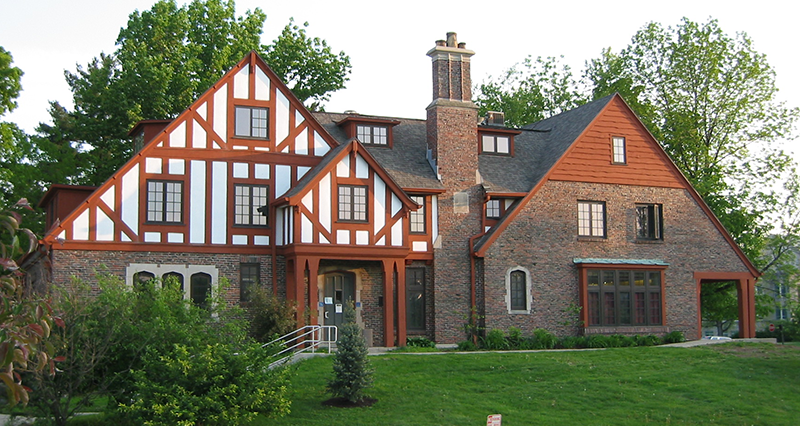Herman B Wells had a strong commitment to a global view of education. In the early 1940s, he divided his time between IU and the U.S. State Department and was active in the precursors to the United Nations. Recognizing the importance of international students to the university, he created the position of counselor to foreign students in 1943 when international enrollments numbered fewer than 50. He chose for that position a young faculty member, Leo R. Dowling who had taught French and then business administration. As well as advising foreign students, Dowling continued teaching and assisted with Veteran’s Affairs.
During the 1940s, Dowling’s activities focused on the needs of international students. He helped to set up the National Association of Foreign Student Advisors. In the spring of 1951, with the leadership of Wells and Dowling, an International Center was established in a house on campus. In 1958 the international center activities moved to the newly renovated Alpha Chi Omega sorority house that had been built in the late 1920’s, a Tudor style house which sat on a hill with the Read residence facility behind it.
Greater space and increasing numbers of international students—from 531 in 1960, to 1,442 in 1970, to almost 2,000 in 1980—resulted in an expansion of the center’s activities. International student orientation, forums on current global issues, practical help sessions on finances, employment, and reentry and conversation circles were some of the events that the center offered the university community in the facility.
Leo Dowling retired in 1977. By the early 80’s, the Office of International Services began a fund drive to renovate the center. Major repairs were undertaken in 1982, but these ensured only that the infrastructure could support continued operation. When Dowling died in 1986, his memory spurred interest in the Center, but it wasn’t until the 1990’s that the center saw the benefit of these fundraising efforts, and the building went through a major renovation. IU’s longstanding Honors Program in Foreign Languages for High School Students moved its offices onto the third floor around that time. In February 1992, with IU President Thomas Ehrlich presiding, the home of international student activities became known as the Leo R. Dowling International Center. In his 34 years of service to IU international students, it is said that Leo Dowling entertained every international student in his home at least once. The national organization he helped to build is now NAFSA: Association of International Educators, the largest of its kind in the world. During his tenure, international student enrollments went from 29 to more than 1,500. The International Center had come to symbolize concern, commitment, and respect for international students, which Leo Dowling conveyed to generations of students by his own example. Further renovations and enhancements to the facility were undertaken in the mid 1990’s.
As the numbers of international students at the IUB campus grew to over 5,000 by the fall of 2010, the Office of International Services was tasked with incorporating the operations of International Admissions. This resulted in the relocation in July, 2011, of many staff from the Office of Admissions to the second floor of the Dowling International Center. Concurrent to this process a special university committee produced two major studies—the New Academic Directions Plan as well as the Old Crescent Report, both of which proposed a new future for Franklin Hall, the home since 1972 of many student services, including the Office of International Services and Education Abroad.



